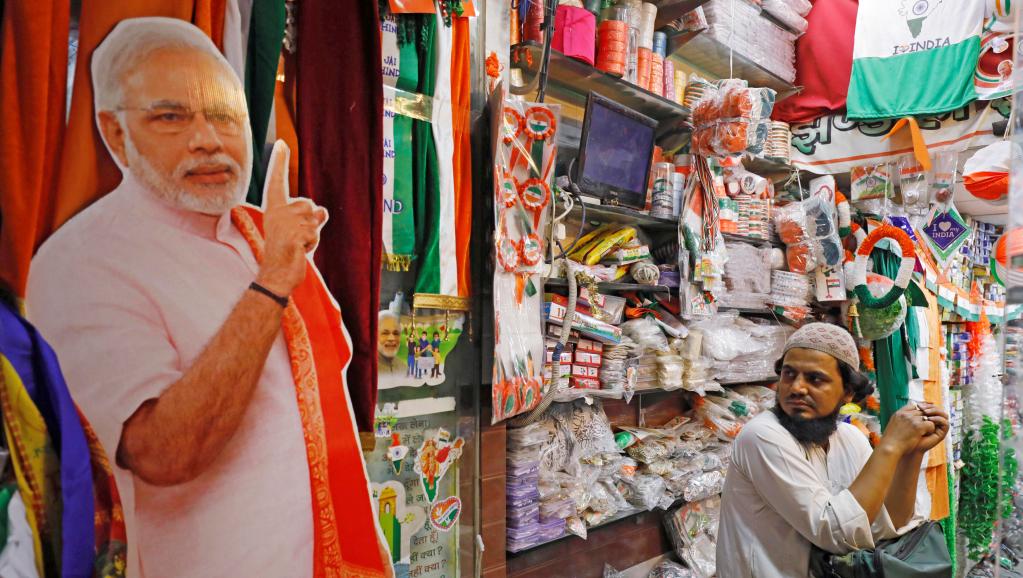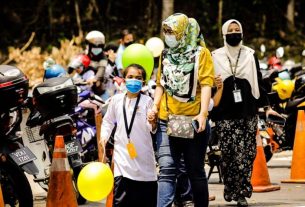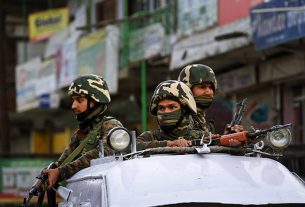Thu 09 May 2019:
7 minutes read
This general election is crucial in determining India’s future polity, and whether or not its secular credentials will persist
The Indian election is a protracted exercise but there is never a dull moment. With 900 million registered voters, 29 states and seven union territories, the electoral race in the world’s largest democracy involves two major contestants, each utilising different communication methods and styles.
During elections, political communication aims, among other things, to enhance the candidates’ appeal with a range of diversified and coherent image building operations. As a result, candidates use various campaigning and media techniques to establish a rapport with the voters. While the far-right incumbent Narendra Modi from the Bharatiya Janata Party (BJP) intensifies its ideological campaign blitz, which combines hard-line Hindu nationalist vitriol with national security discourse, the centre right-left contender Rahul Gandhi, the telegenic scion of an Indian political dynasty going back five generations, is pledging to implement economic reforms, increase social spending, empower women, and end poverty by 2030.
Both Modi and Gandhi are presenting two different societal visions. While the former is capitalizing on politics of fear, the latter makes the case for an all-inclusive India, taps into a large reservoir of hope, and pleads with the electorate to be wise and vote for “India’s soul” [1]. Modi’s win in 2014 unleashed a tsunami of new media entangled with political communication in India. Subsequently, Modi became one of the most popular leaders on Facebook with more than 43.5 million likes [2] on his personal page. Modi’s social media strategy relied on a mixture of self-promotion and public relations combined with India’s soft-power imagery.
This approach allowed him to create a personal myth, evoking fictitious credentials, and painting himself as an extraordinarily decisive leader. Modi’s social media messages hardly address any non-Hindu religious traditions of India. Instead, his posts are laced with more Hindu references, articulating a pro-Hindutva ideological discourse. The Hindutva ideology, holds onto cultural representation of India as a Hindu nation [3], defining it in terms of Hindu values and culture, thereby excluding other religions like Islam and Christianity.
Added to this mix is the campaign of disinformation and fake news, which stokes controversies and confuses the adversaries’ electoral base. According to experts, the circulation of fake content, especially through Facebook and WhatsApp, not only sways voters but also allows Modi’s fervent supporters to propagate content, mobilizing mobs against the Muslim community [4]. Additionally, disinformation as a tool in the 21st-century politics contributes to the shaping of a mythical image for candidates. A notorious example is the deluge of fake news following the Pulwama attack. Modi’s social media team milked every opportunity from this event to underscore the national security rhetoric, and put his campaign’s themes in the limelight to win over the hard-line nationalistic voter base.
According to the Human Rights watch, “Many senior leaders of the ruling Bharatiya Janata Party (BJP) have publicly promoted Hindu supremacy and ultra-nationalism at the expense of fundamental rights for all Indians”. Therefore, the characteristics of modern media have allowed Modi and his party to intertwine politics with a divisive ideological discourse. As viewers remain exposed to an extensive number of media messages, constructing a nuanced perspective becomes a hard task for the general public.
Also, with the tweets’ short shelf life, they tend to blur the impact and consequences of the national policies undertaken by the BJP. For instance, the country’s poorest segments continue to suffer the consequences of the failure of the demonetization policy, as many commercial businesses in India’s economy remain cash-dependent, the growth rate sank to six percent, making India lose its title of “fastest growing economy” [5]. Therefore, the haste in which the policy was implemented makes it hard to grasp its implications even for experts to this day.
In contrast with Modi’s communication strategy, Rahul Gandhi used different image-building tactics, focusing on debunking some of the falsehoods circulated by the BJP. During the run-up to the elections, laced with the rhetoric of hope, Ghandi’s twitter feed concentrated on the BJP’s most notorious flops such as their failure to alleviate farmers’ distress or address poverty and social exclusion.
Gloves were off in Gandhi’s campaign but the methods were more sophisticated. In this context, the pages run by the Congress target the BJP leaders and Modi with satirical content [6]. Gandhi’s campaign strategy was also combined with other signifiers. From a symbolic perspective, the entry of his charismatic sister Priyanka Gandhi as the general secretary of the largest state of Uttar Pradesh has a potential to energize the vote bank in one of India’s largest constituency — a key battleground state in the Indian elections.
Besides, Priyanka’s electioneering has attracted a lot of media attention, as her political narrative consisted of promoting the state’s glorious past, tapping into the historical legitimacy of the Congress; a party which was at the frontlines during India’s freedom struggle. Therefore, with such tactics, Rahul Gandhi aims to unify India and act against the divisive politics of Modi’s BJP.
Arguably, the communication and rhetorical battles in this electoral contest represent societal and social conditions on the ground. The rise of the BJP is related to the fall of the Congress from 1984 to 2014 [7]. As a result of disintegration caused by nepotism, lack of cohesiveness and leadership, the electoral crisis of the Congress hit a record low in the previous election cycle, as it was only able to secure 44 seats out of 543 in the parliament. Therefore, the 2019 election race is a litmus test for the party and ensuring its survival.
Even so, despite the past failures of the Congress party, Modi’s most recent win was still narrow. He took only 31 percent of the vote share in the 2014 election, which is the lowest percentage to win for an outright majority.
In short, Modi’s campaign uses modern communication to promote the narrative of far-right Hindu nationalism. The subsequent polarization provides more justifications to the pro-Hindutva extremists and incites them to conduct mob attacks against minority groups in the country. On the other hand, the opposition’s rise has forged an anti-BJP front but its effectiveness will be tested in this electoral battle.
Therefore, this general election is crucial in determining India’s future polity, and whether or not its secular credentials will persist. This, in turn, will define the future course of the world’s largest democracy and the fate of its 1.3 billion people.
Think your friends would be interested? Share this story!





